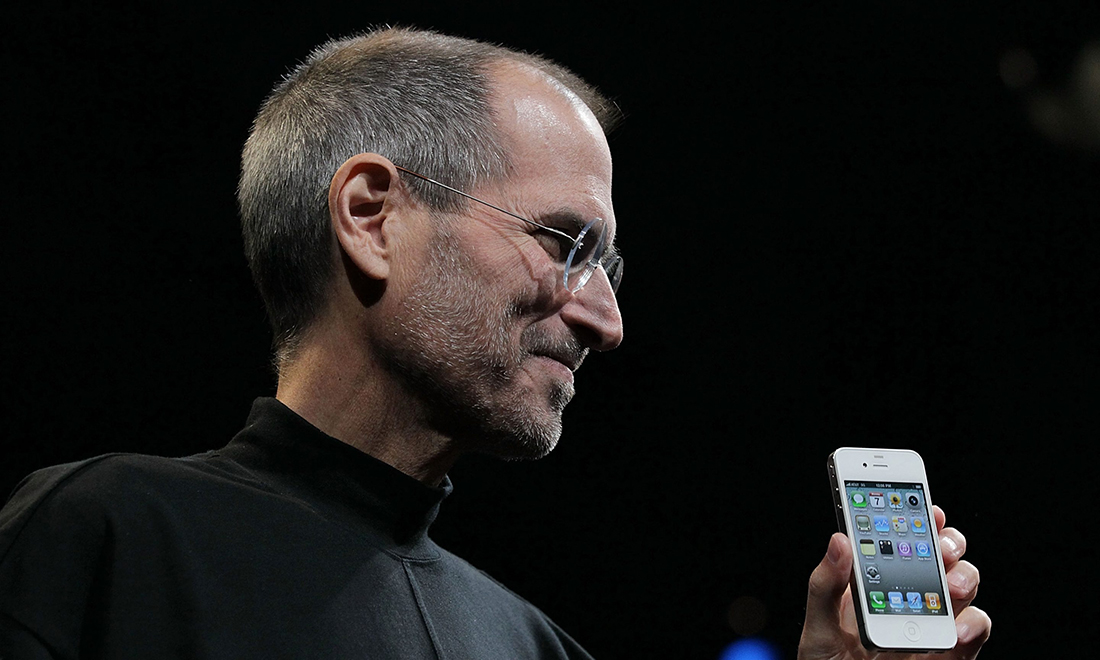
33年前,史蒂夫·喬布斯曾經(jīng)說過,,個人電腦將成為人類頭腦的自行車,。在這些年里,智能手機的出現(xiàn)和社交媒體的廣泛采用,,讓這些自行車變成了失控的火車,。美國人每天花在智能手機上的時間超過四個小時,超過一半的人說他們沉迷于手機,。2023年5月,,美國衛(wèi)生局局長就社交媒體對青少年心理健康的影響發(fā)出警告。
我們中的大多數(shù)人可能不需要這樣的統(tǒng)計數(shù)據(jù)就能夠發(fā)現(xiàn)這一現(xiàn)象:我們自己的習慣表明,,當今的數(shù)字健康形勢嚴峻,。在使用手機時,人類的注意力和意圖之間存在根本性的錯位,。
不過,,我們也有理由保持樂觀。行為錯位并不是一個新問題,。正如城市規(guī)劃學家和哲學家保羅·維利里奧曾經(jīng)說過的那樣:“當我們發(fā)明了輪船的時候,,我們也發(fā)明了沉船?!蔽覀儞碛胁还絻?yōu)勢——這一問題的數(shù)字化本質(zhì),。
行為錯位帶來的普遍挑戰(zhàn)
行為錯位——我們的行為偏離了最佳利益——是在各個領域反復出現(xiàn)的挑戰(zhàn)。從加工食品的大量引入導致肥胖癥流行,,到寬松信貸后出現(xiàn)的習慣性超支,,歷史上不乏此類錯位的例子。然而,,美國的吸煙趨勢為全社會在行為錯位問題上取得進展提供了一個很有好的例子,。近幾十年來,美國吸煙人數(shù)從40%左右下降到12%左右,。
這種下行壓力是由以下幾個因素共同推動的:
? 公眾意識和教育:美國衛(wèi)生局局長1964年關于吸煙帶來的健康風險的報告引發(fā)了廣泛的認識,,導致了廣泛的公共衛(wèi)生運動。
? 政策干預:實現(xiàn)全面立法,,包括公共場所禁煙和嚴格的廣告限制,,極大地遏制了民眾的吸煙習慣。
? 文化轉(zhuǎn)變:隨著時間的推移,,在媒體報道和公眾輿論的改變下,,吸煙越來越不被社會所接受。
? 技術進步:尼古丁替代療法和戒煙支持數(shù)字工具的引入在幫助吸煙者克服煙癮方面發(fā)揮了關鍵作用。
這些同樣的力量正在為數(shù)字健康而戰(zhàn),。人們意識的提高引起了更多的研究關注,,從而加深了我們對這一問題的集體理解。現(xiàn)在是時候?qū)で蟛⑿薪鉀Q方案了:技術在保護我們的注意力方面,,與社交媒體平臺在榨干我們的注意力方面同樣出色,。
我們對抗數(shù)碼成癮的最大優(yōu)勢
想象一下這樣的場景,如果你可以編寫這樣的代碼:當你接近一天的卡路里上限時,,甜甜圈就會變得越來越重。這就是我們能夠用設備做的事情,。我們完全有可能將負責任的設備使用行為與“成癮”本身編碼在同一環(huán)境中,。
我們可以大規(guī)模地部署環(huán)境變化,對任何想要改變自己行為的人來說都無需付出邊際成本,。這是戒煙或健康食品運動從未有過的不公平優(yōu)勢,。
下一代數(shù)字接口——大型語言模型、虛擬現(xiàn)實和腦機接口——有望降低人類與設備之間通信延遲,,使數(shù)字世界比以往任何時候都更貼近我們,,這一點變得尤為重要。現(xiàn)在,,我們只需要將手伸進口袋就能夠上網(wǎng),,而在未來,只要一個念頭閃過就可以上網(wǎng),。
隨著刺激和回應之間的空間縮小,,除非我們提高自己在這些環(huán)境中表達和執(zhí)行自身注意力偏好的能力,否則平臺榨干人類注意力的機會就將繼續(xù)存在,。
為了有效地做到這一點,,我們將重點關注四個關鍵原則:
1. 高科技問題的高科技解決方案:我們必須利用當今最好的技術來保護注意力,而不是榨干它,。
2. 實現(xiàn)節(jié)制而非禁欲:將科技從我們的生活中徹底移除是徒勞無益的,。我們可以采用綜合的方法來調(diào)整參與度,在保留工具的同時消除干擾,。
3. 基于利益的內(nèi)容消費:提升技能是一種從根本上有別于負面消息刷屏的數(shù)字參與方式,。我們要跟蹤兩者之間的區(qū)別,并將其作為持續(xù)協(xié)議的依據(jù),。
4. 替代行為(“拒絕一些事情,,從而選擇更好的事情”):在你被誘導刷手機的同時,我們會提醒你生活中更重要的事情,,比如登山遠足,、深入交談和追求你一生的事業(yè)。
正如奧地利精神病學家和大屠殺幸存者維克多·弗蘭克爾所說:“在刺激和回應之間還留有一些空間,,這個空間允許我們以自己的意志去選擇我們的回應方式,。我們所作出的回應包含了我們的成長和自由,。”現(xiàn)在是技術專家?guī)椭祟愔匦聤Z回那片空間的時候了,。(財富中文網(wǎng))
羅伊斯·布蘭寧(Royce Branning)是Clearspace的聯(lián)合創(chuàng)始人及首席執(zhí)行官,。
譯者:中慧言-王芳
33年前,史蒂夫·喬布斯曾經(jīng)說過,,個人電腦將成為人類頭腦的自行車,。在這些年里,智能手機的出現(xiàn)和社交媒體的廣泛采用,,讓這些自行車變成了失控的火車,。美國人每天花在智能手機上的時間超過四個小時,超過一半的人說他們沉迷于手機,。2023年5月,,美國衛(wèi)生局局長就社交媒體對青少年心理健康的影響發(fā)出警告。
我們中的大多數(shù)人可能不需要這樣的統(tǒng)計數(shù)據(jù)就能夠發(fā)現(xiàn)這一現(xiàn)象:我們自己的習慣表明,,當今的數(shù)字健康形勢嚴峻,。在使用手機時,人類的注意力和意圖之間存在根本性的錯位,。
不過,,我們也有理由保持樂觀。行為錯位并不是一個新問題,。正如城市規(guī)劃學家和哲學家保羅·維利里奧曾經(jīng)說過的那樣:“當我們發(fā)明了輪船的時候,,我們也發(fā)明了沉船?!蔽覀儞碛胁还絻?yōu)勢——這一問題的數(shù)字化本質(zhì),。
行為錯位帶來的普遍挑戰(zhàn)
行為錯位——我們的行為偏離了最佳利益——是在各個領域反復出現(xiàn)的挑戰(zhàn)。從加工食品的大量引入導致肥胖癥流行,,到寬松信貸后出現(xiàn)的習慣性超支,,歷史上不乏此類錯位的例子。然而,,美國的吸煙趨勢為全社會在行為錯位問題上取得進展提供了一個很有好的例子,。近幾十年來,美國吸煙人數(shù)從40%左右下降到12%左右,。
這種下行壓力是由以下幾個因素共同推動的:
? 公眾意識和教育:美國衛(wèi)生局局長1964年關于吸煙帶來的健康風險的報告引發(fā)了廣泛的認識,,導致了廣泛的公共衛(wèi)生運動。
? 政策干預:實現(xiàn)全面立法,,包括公共場所禁煙和嚴格的廣告限制,,極大地遏制了民眾的吸煙習慣。
? 文化轉(zhuǎn)變:隨著時間的推移,在媒體報道和公眾輿論的改變下,,吸煙越來越不被社會所接受,。
? 技術進步:尼古丁替代療法和戒煙支持數(shù)字工具的引入在幫助吸煙者克服煙癮方面發(fā)揮了關鍵作用。
這些同樣的力量正在為數(shù)字健康而戰(zhàn),。人們意識的提高引起了更多的研究關注,,從而加深了我們對這一問題的集體理解。現(xiàn)在是時候?qū)で蟛⑿薪鉀Q方案了:技術在保護我們的注意力方面,,與社交媒體平臺在榨干我們的注意力方面同樣出色,。
我們對抗數(shù)碼成癮的最大優(yōu)勢
想象一下這樣的場景,如果你可以編寫這樣的代碼:當你接近一天的卡路里上限時,,甜甜圈就會變得越來越重,。這就是我們能夠用設備做的事情。我們完全有可能將負責任的設備使用行為與“成癮”本身編碼在同一環(huán)境中,。
我們可以大規(guī)模地部署環(huán)境變化,,對任何想要改變自己行為的人來說都無需付出邊際成本,。這是戒煙或健康食品運動從未有過的不公平優(yōu)勢,。
下一代數(shù)字接口——大型語言模型、虛擬現(xiàn)實和腦機接口——有望降低人類與設備之間通信延遲,,使數(shù)字世界比以往任何時候都更貼近我們,,這一點變得尤為重要。現(xiàn)在,,我們只需要將手伸進口袋就能夠上網(wǎng),,而在未來,只要一個念頭閃過就可以上網(wǎng),。
隨著刺激和回應之間的空間縮小,,除非我們提高自己在這些環(huán)境中表達和執(zhí)行自身注意力偏好的能力,否則平臺榨干人類注意力的機會就將繼續(xù)存在,。
為了有效地做到這一點,,我們將重點關注四個關鍵原則:
1. 高科技問題的高科技解決方案:我們必須利用當今最好的技術來保護注意力,而不是榨干它,。
2. 實現(xiàn)節(jié)制而非禁欲:將科技從我們的生活中徹底移除是徒勞無益的,。我們可以采用綜合的方法來調(diào)整參與度,在保留工具的同時消除干擾,。
3. 基于利益的內(nèi)容消費:提升技能是一種從根本上有別于負面消息刷屏的數(shù)字參與方式,。我們要跟蹤兩者之間的區(qū)別,并將其作為持續(xù)協(xié)議的依據(jù),。
4. 替代行為(“拒絕一些事情,,從而選擇更好的事情”):在你被誘導刷手機的同時,我們會提醒你生活中更重要的事情,比如登山遠足,、深入交談和追求你一生的事業(yè),。
正如奧地利精神病學家和大屠殺幸存者維克多·弗蘭克爾所說:“在刺激和回應之間還留有一些空間,這個空間允許我們以自己的意志去選擇我們的回應方式,。我們所作出的回應包含了我們的成長和自由,。”現(xiàn)在是技術專家?guī)椭祟愔匦聤Z回那片空間的時候了,。(財富中文網(wǎng))
羅伊斯·布蘭寧(Royce Branning)是Clearspace的聯(lián)合創(chuàng)始人及首席執(zhí)行官,。
譯者:中慧言-王芳
It’s been 33 years since Steve Jobs talked about the personal computer becoming a bicycle for the mind. In those years, the advent of the smartphone and the mass adoption of social media have turned those bicycles into runaway trains. Americans spend more than four hours a day on their smartphones–and more than half say they are addicted to their device. In May 2023, the surgeon general issued a warning about the concerning effects of social media on youth mental health.
Most of us probably do not require such statistics to identify the phenomenon: Our own habits reveal that the state of digital well-being today is a grim one. There is a fundamental misalignment between human attention and intention when engaging with screens.
However, there is cause for optimism. Behavioral misalignment is not a new problem. As urbanist and philosopher Paul Virilio once said, “When we invented the ship, we invented the shipwreck.” And we have an unfair advantage–the very digital nature of the problem.
The universal challenge of behavioral misalignment
Behavioral misalignment–where our actions diverge from our best interests–is a recurring challenge across various domains. From the obesity epidemic spurred on by the mass introduction of processed foods to habitual overspending that came on the heels of access to easy credit, history is replete with examples of such misalignments. However, the trend in U.S. cigarette smoking provides a promising example of progress in society-wide issues of behavioral misalignment. In recent decades, the number of U.S. smokers has declined from around 40% to around 12%.
The downward pressure on this graph was driven by a number of efforts in concert:
? Public awareness and education: The Surgeon General’s 1964 report on smoking’s health risks sparked widespread awareness, leading to extensive public health campaigns.
? Policy interventions: Comprehensive legislation, including smoking bans in public places and stringent advertising restrictions, significantly curtailed smoking habits.
? Cultural shifts: Over time, smoking became socially less acceptable, aided by changing media portrayals and public opinion.
? Technological advances: The introduction of nicotine replacement therapies and digital tools for cessation support played a key role in helping smokers overcome addiction.
These same forces are coming into play in the fight for digital well-being. Increased awareness is giving rise to greater research attention that is deepening our collective understanding of the issue. The time has come for a parallel solution: technology that is just as good at protecting our attention as social media platforms are at exploiting it.
Our biggest advantage in fighting digital addiction
Imagine if you could write code that would make a donut increasingly heavier as you got closer to your calorie limit for the day. This is what we can do with devices. It is entirely possible to encode the practices of responsible device engagement in the same environment as the “addiction” itself.
We can deploy environment change at scale with no marginal cost to anyone who wants to change their behavior. That is an unfair advantage that smoking cessation, or health food campaigns have never had.
This is all the more important as the next generation of digital interfaces–Large Language Models, virtual reality, and Brain-Computer Interfaces–promise to bring the digital world closer to us than ever before with their promise to reduce the latency of communication between humans and devices. Our impulse to access the internet is now a reach to the pocket away, in the future, it will be one thought away.
As the space between stimulus and response shrinks the opportunity for platforms to exploit human attention will continue, unless we increase our own capacity to articulate and implement our attention preferences in these environments.
To do this effectively we focus on four key tenets:
1. High-tech solutions for a high-tech problem: The best technology of our day must be leveraged as a force to protect attention rather than exploit it.
2. Enabling moderation rather than abstinence: An outright war to remove technology from our lives is futile and unhelpful. We can develop integrated methods of moderating engagement that keep the tool while removing the distraction.
3. Benefit-based content consumption: Up-skilling is a fundamentally different digital engagement practice than doom scrolling. We track the difference and let it inform ongoing protocols.
4. Replacement behaviors (The “Better Yes”): In the same moment that you are enticed to scroll, we remind you of the more important things in life; like hiking in the mountains, deep conversations, and pursuing your life’s work.
As Austrian psychiatrist and Holocaust survivor Victor Frankl put it, “Between stimulus and response, there is a space. In that space lies our freedom and our power to choose our response. In our response lies our growth and our happiness.” It is time for technologists to help humanity reclaim that space.
Royce Branning is the co-founder and CEO of Clearspace.






